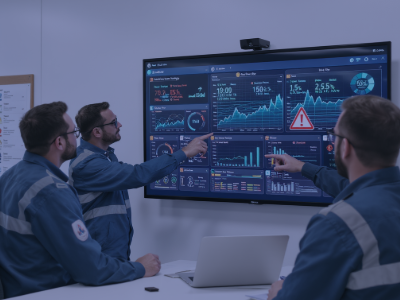This article was originally published in the Australian Mining Review December 2023 issue.
The Australian mining industry currently finds itself at a crossroads.
According to a recent report by Deloitte which tracks the trends for mining and metals in 2023, many mine workers are at least age 46 and nearly 50% of skilled engineers are reaching retirement age in the next decade.
A report by Engineering Australia estimates Australia has lost approximately $3.8 billion of productivity and accrued $3.9 million in avoidable recruitment costs due to the lack of the right talent.
The skills shortage is very apparent in Australia. Across 2021-22, engineering vacancies across the nation increased by 80 per cent, compared to 42 per cent for all averaged Australian occupation vacancies.
The engineering skills shortage is predicted to continue to rise. In 2023, Infrastructure Australia predicts labour demands to grow by 42,000 to a peak of 442,000 more than doubling the projected available supply. As a result of government investments in industries including public infrastructure, defence, and renewable energy, demand for engineers will continue to increase.
However, the skills shortage isn’t only due to an ageing workforce. The mining industry also continues to face low recruitment numbers from the younger generation.
As a result, there is now fierce competition between mining companies over the limited pool of skilled professionals. While large organisations are attractive to graduates due to their extensive graduate programs and international projects, smaller businesses can struggle to have a competitive edge.
Furthermore, there is an increased need for workers to upskill and increase their knowledge, due to the introduction of new technologies.
The labour shortage comes at a time when there is an increase in demand for minerals not only in Australia but worldwide.
With experienced miners reaching retirement age, the mining industry faces a formidable challenge. A significant knowledge gap is emerging and retraining the skills and wisdom of the retiring workforce is paramount.
Considering Australia ranks 25th overall on the Global Innovation Index, there is a lot of room for improvement. The solution may very well lie in the innovative use of technology.

The role of technology
Technology, as Glen Johnson, Product Manager at Mipac, emphasises, is a game-changer in addressing these challenges.
“Technology offers us a host of solutions to bridge the skills gap,” he explains.
“We are witnessing a shift towards a future where automation, data-driven decision making and real-time insights are the norm. By adopting these technological advancements, we are not only addressing the challenge of the current skills shortage but also revolutionising how mining operations operate.”
Automation, remote monitoring and artificial intelligence-driven systems are key players in enhancing safety and productivity, which reduces the industry’s reliance on experienced workers.

Collaborating and upskilling
In the pursuit of a comprehensive solution to the mining industry’s workforce challenges, collaboration and upskilling have taken centre stage.
Mipac’s approach is to work with its clients to co-develop software solutions. Mipac’s collaborative approach with clients to tailor solutions to their specific needs has been instrumental in ensuring that the benefits of technology extend to all facets of mining.
Mipac had recent success with Northern Star Resources Limited’s Pogo Operations in Alaska.
James Sweeny, Project Metallurgist, Northern Star Resources Limited, was able to experience the benefits of introducing new technology firsthand.
“I tried to calculate the benefit based on the per cent improvement in time savings, but it is not possible to divide by zero. With MPA Logsheets, we no longer spend any time maintaining our Logsheet system,” Sweeny says.

A vision for the future
As the mining industry confronts the challenges of an ageing workforce and the struggle to attract skilled resources, technology has emerged as a pivotal ally. Introducing technological advances allows mines to open the door to a more accessible and sustainable workforce.
Despite the current challenges the mining industry faces, Johnson paints an optimistic picture of the future.
“I believe that the right blend of technology, education and industry collaboration, can assist in addressing the current and future challenges posed by the skills shortage. The future of the Australian mining industry is full of opportunities for more innovative, safe and sustainable operations. Embracing technology will be pivotal in shaping a new era for the industry.”
Read more about Mipac's digital solutions
In 2026, operational excellence means clarity, alignment, and confidence. Learn how Golden State helps mineral processing teams define and reach their “Golden State.”
Discover how Golden State is helping operators, metallurgists and operations managers achieve production targets and transform production meetings with real-time Short Interval Control in 2026.
Still drowning in plant data? Discover how Golden State helps mineral processing teams move from chaos to clarity with real-time, contextualised insight.



